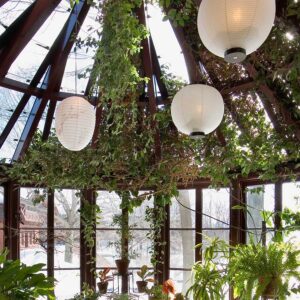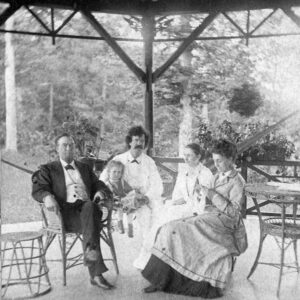
Teachers & Students
Virtual Tour Inquiry Framework
Guide your students’ exploration of The Mark Twain House virtual tour with this flexible framework.
Even if you can’t bring your students to The Mark Twain House & Museum in person, you can still have them visit using our eye-catching virtual tour–and they can visit for as long as they like!
We’ve created this inquiry framework, which can be adapted for students K-12 and beyond, to help you get the most out of your virtual visit. Drawing on social studies and visual arts standards, it invites students to think about two big questions:
How can we use a historic house museum as a source for understanding the lives of people in the past?
How do people who work in museums use objects and buildings to tell stories? How do they choose what stories to tell?
You can explore the house as a class or have your students explore on their own. You can assign students to look at specific rooms or floors, or even to look for specific elements throughout the house. And you can, of course, pose your own questions that connect to things you and your students have been doing together. After your exploration, you can even schedule a video chat with one our historic interpreters, who’ll answer all of your students’ questions and tell them more about the home and the people who lived and worked there.
Depending on what you’d like your students to think about, you can provide them with some, all, or none of this background information at any point in their exploration of the house.
⸭ Biographies of Sam Clemens, Livy Clemens, and the Clemens children.
⸭ Summaries of some of Mark Twain’s major works.
⸭ Episodes of Catching Up With The Clemenses, the museum’s web series for children.
Book a chat with one of our historic interpreters!Before starting your exploration
 What is a museum? Have you ever visited one? What different kinds are there?
What is a museum? Have you ever visited one? What different kinds are there?
What makes a historic house museum different from other kinds of museums?
What kinds of stories can we tell using a house?
Who might live in a house? Who might work in a house?
Do you think this house will look exactly as the family left it over a hundred years ago? If not, who decided what to put in it and where to put all of those things? What choices do the people who work in museums have to make when restoring and placing objects in a historic house?
In each room
 What do you notice about this room?
What do you notice about this room?
What objects do you see? (Furniture, books, plants, toys, art, fake food!)
What do you think this room was used for? What makes you think that? (Objects, layout, position in the house)
Who do you think would use this room? What makes you think that?
Was it an everyday room or a room for special occasions? Could it be both? What makes you think that?
Play a game of I Spy in the nursery or school room!At the end of the exploration
 How many people do you think lived in this house? Worked in this house? Can you be sure of your answers just by looking at the inside of the house or do you need more information?
How many people do you think lived in this house? Worked in this house? Can you be sure of your answers just by looking at the inside of the house or do you need more information?
What do you think about the people who lived in this house? What kind of life do you think they had? What about the house made you think this?
Many of the rooms in this house are rooms we would still find in homes today–bedrooms, dining rooms, kitchens. What has stayed the same about those rooms and what has changed? (Objects/technology, size, etc.)
What do you want to know more about? (The lives of the people in the house and in the Gilded Age more broadly, what rooms were for, what specific objects are, who created the artwork in the house, etc.)
Options for independent work and play
 Ask each student to answer the room-based questions in detail for a specific room.
Ask each student to answer the room-based questions in detail for a specific room.
Ask each student to choose one object in the house that they want to know more about. Have them write down everything they think they can figure out about what it’s made of and where it is in the house, and then have them speculate on what it might be for and who would use it. If you schedule an interpreter chat, your students can ask them about their objects.
Have students color in their own versions of the beautiful tiles, stencils, and wallpapers in the house.
How have you used our virtual tour in the classroom?
We’d love to hear how you and your students have explored and learned from our virtual tour. Let us know how you’ve used and adapted this framework, and feel free to share your ideas for things we could add!
